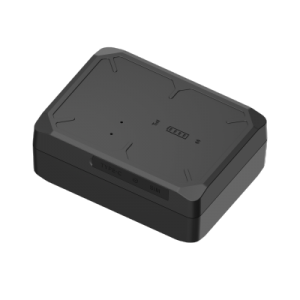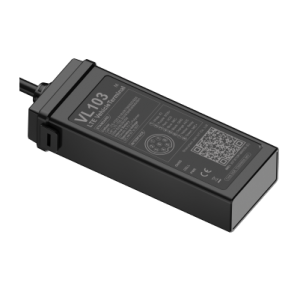GPS trackers have become an essential tool for individuals, businesses, and even governments. They help in keeping track of people, vehicles, and assets, ensuring safety and efficiency. With the rapid development of technology, GPS trackers have evolved too, offering features and capabilities that were once unimaginable. However, with the advancement in technology comes the need to understand the differences between various GPS trackers, specifically 4G, 3G, and 2G trackers. In this article, we will delve into the world of GPS trackers to help you distinguish between these types and make informed decisions. Let’s get started!
A Quick Intro to 2G, 3G, and 4G
Before we dive into GPS trackers, let’s take a moment to understand the basics of 2G, 3G, and 4G. These terms refer to the “generation” of mobile communication technology. Each generation offers better speed, capacity, and functionality compared to its predecessor.
- 2G – Introduced in the early 1990s, this generation brought digital voice and text messaging capabilities to mobile phones.
- 3G – Launched in the early 2000s, 3G offered faster data transfer rates, enabling features like video calling and mobile internet.
- 4G – The current generation, introduced in the late 2000s, provides even faster data speeds and improved network capacity, making it perfect for high-quality video streaming and advanced applications.
Now that we have a basic understanding of these generations let’s explore how they impact GPS trackers.
2G GPS Trackers
2G GPS trackers use the older 2G network for communication. These trackers are typically more affordable and consume less power compared to their 3G and 4G counterparts. However, they come with their own set of limitations:
- Slower data transmission: 2G trackers have limited data transfer speeds, which means you might experience delays in receiving location updates.
- Limited coverage: As 2G networks are being phased out in many countries, the coverage for these trackers is becoming increasingly limited. According to a report by GSMA, by the end of 2020, 2G networks covered only 60% of the global population compared to 3G’s 89% and 4G’s 81% coverage.
Despite these limitations, 2G GPS trackers can still be useful for simple tracking tasks, such as monitoring the location of a personal vehicle or keeping tabs on a pet. They are also ideal for regions where 2G networks are still widely available.
3G GPS Trackers
3G GPS trackers offer a significant upgrade over their 2G counterparts in terms of speed and coverage. They can transmit data faster, ensuring timely location updates and smoother tracking experience. Some key advantages of 3G trackers include:
- Wider coverage: As mentioned earlier, 3G networks cover up to 89% of the global population, making these trackers more reliable than 2G ones.
- Better functionality: With faster data transmission, 3G trackers can support more advanced features like geofencing, real-time alerts, and detailed tracking history.
3G GPS trackers are suitable for a wide range of applications, from personal use to commercial fleet management and asset tracking. However, they come with a higher price tag and power consumption compared to 2G trackers.
4G GPS Trackers
4G GPS trackers represent the cutting edge of tracking technology. These devices leverage the high-speed 4G networks to offer unparalleled tracking capabilities. Some of the key benefits of 4G trackers include:
- Fastest data transmission: With 4G networks offering data speeds up to 10 times faster than 3G, these trackers provide real-time location updates and seamless tracking experience.
- Future-proof: As the world moves towards 5G and beyond, 4G trackers are more likely to remain compatible with future network upgrades, ensuring long-term usability.
However, 4G GPS trackers are usually the most expensive and power-hungry of the three types. They are ideal for high-stakes applications like law enforcement, emergency services, and high-value asset tracking.
How to Choose the Right GPS Tracker
Now that you understand the differences between 4G, 3G, and 2G GPS trackers, how do you choose the right one for your needs? Here are a few factors to consider:
- Coverage: Ensure the tracker you choose has adequate network coverage in the area where you plan to use it.
- Features: Determine the features you need, such as real-time tracking, geofencing, or alerts, and choose a tracker that supports those features.
- Budget: Consider your budget and weigh the benefits of each type of tracker against its cost and power consumption.
In conclusion, understanding the differencesbetween 4G, 3G, and 2G GPS trackers is crucial in making the right choice for your tracking needs. While 2G trackers are more affordable and power-efficient, they suffer from limited coverage and slower data transmission. On the other hand, 3G trackers offer a balance between speed, coverage, and cost, making them suitable for a wide range of applications. Lastly, 4G trackers provide the fastest data transmission and future-proof capabilities, but at a higher price and power consumption. By considering your specific requirements, budget, and the network coverage in your area, you can make an informed decision and choose the perfect GPS tracker for you.
Why Jimi IoT?
Jimi IoT relies on innovative solutions for driver status monitoring and vehicle tracking for fleet management, more effective driver tracking, recording, notification, monitoring and efficient fleet management.
Jimi has more than 20+ years of experience in the loT/loV industry and a team of experts to assist you in the adoption. We offer ready-todeploy solutions (with IoT SIM cards for worldwide connectivity) as well as OEM, ODM.and OBM services to suit your industry-specific needs. Contact us at info@jimilab.com
 EN
EN ES
ES PT
PT TH
TH VN
VN JP
JP




